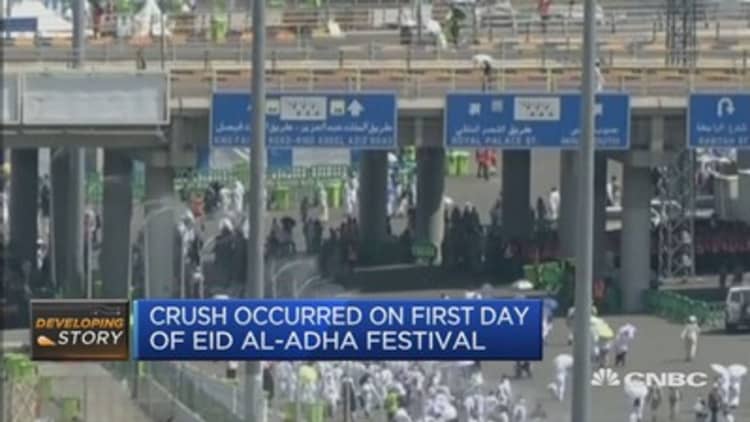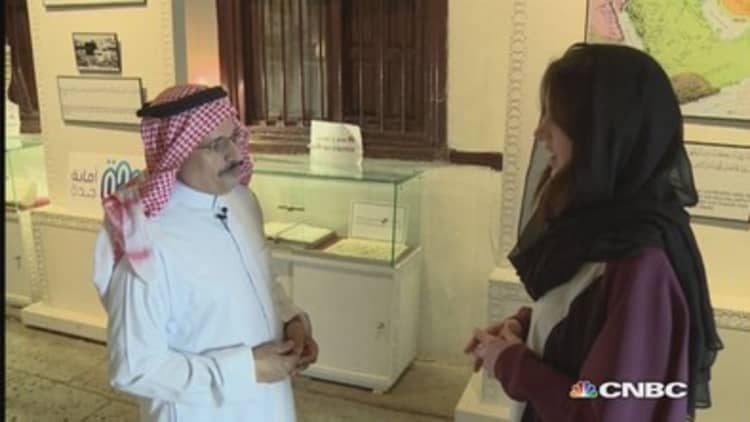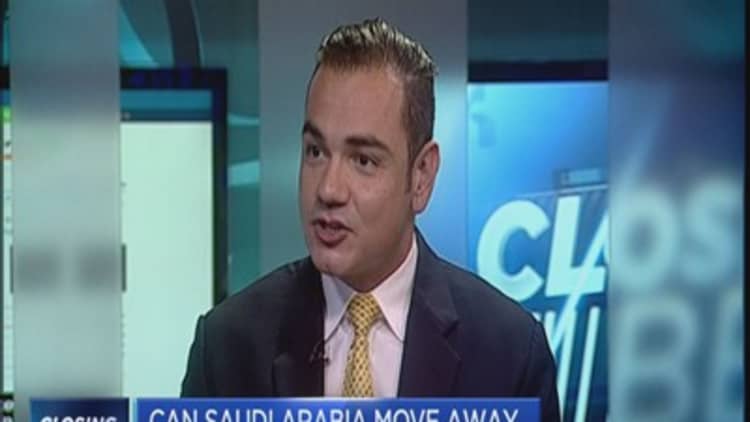
It's the biggest mass gathering in the world, an integral part of the Muslim faith and provides a big economic boost for Saudi Arabia. But the hundreds of fatalities from this week's stampede and the recent deadly collapse of a crane has highlighted the dangers of "making hajj" to the holy city of Mecca.
At least 717 pilgrims have died and 805 been injured in the stampede in Mina on the outskirts of Mecca, according to Saudi authorities, marking the worst Hajj disaster in 25 years. Saudi Crown Prince Mohammed bin Nayef has ordered an investigation into the disaster, but the tragedy, coming just two weeks after 100 people were killed when a giant crane at the Grand Mosque collapsed, has cast doubt over Saudi Arabia's ability to manage the massive numbers of pilgrims safely in Mecca.
"It is not the first time a stampede has occurred," Irfan Alawi, the Mecca-born executive director for the Islamic Heritage Research Foundation, told CNBC on Thursday. "They (the authorities) have failed to address the management issues around the health and safety of visitors."
At present, the population of Mecca is swollen by some two million people from around the world on the annual Hajj pilgrimage, which every healthy Muslim male or female with sufficient means is required to undertake at least once in a lifetime.
Saudi Arabia's tourism industry is heavily focused on religious pilgrimages and contributed 2.4 percent to total gross domestic product (GDP) in 2014, according to the World Travel and Tourism Council. It is expected to directly account for 650,000 jobs this year, rising to 942,000 by 2025, according to the tourism body.
Authorities criticized
Following Thursday's disaster, Saudi authorities came under sharp criticism, with Iran reporting that 43 of its citizens had died and accusing its bitter rival of safety errors. The disaster is believed to have occurred when two huge groups of pilgrims arrived at a crossroads in Mina on the way to performing the "stoning of the devil" ritual at Jamarat. An emergency response team numbering around 4,000 people was dispatched on Thursday to help lead pilgrims to safer routes away from the stampede, according to the Royal Embassy of Saudi Arabia in London.
Alawi told CNBC that he "could not understand" how Saudi Arabia could be targeting 7 million annual visitors to Mecca in 10 years' time—a figure that could not be verified by CNBC— given in its inability to ensure safety for the current 2 million visitors.
Among several concerns, he highlighted that the 4,500 officials at Mecca were untrained in health and safety and spoke no languages other than Arabic and English, sharply limiting their ability to control international crowds. "Saudi authorities have to realize, that as one would with the World Cup, you must have crowd control so you know how many people can come in at any one time," Alawi said.
CNBC was unable to reach the Saudi Ministries of Interior, Health or Hajj, or the Prime Minister's Office, or the Saudi embassy in the U.K. for immediate comment.
In a statement on the Saudi Ministry of Health's website, Health Minister Khald al-Falih alleged that pilgrims may have failed to follow instructions regulating crowd movements.
"The investigations into the incident of the stampede that took place today in Mina, which was perhaps because some pilgrims moved without following instructions by the relevant authorities, will be fast and will be announced as happened in other incidents," the statement said, according to Reuters.

Fire hazards
A $60 billion expansion of the Grand Mosque was recently completed, with the target of accommodating 100,000 worshipers per hour. However Alawi raised concerns about fire safety for the buidings.
"How on earth can a mosque open 365 days a year, 24 hours a day have no fire extinguishers? You have hose pipes, but that is not enough," he told CNBC.
He added that although there were four hospitals in the area, none were highly equipped or located closer than three miles to the main sites. Plus, the overcrowding at the sites meant that paramedics would take at least 15-20 minutes to reach any pilgrims in an emergency, before struggling to exit.
The Saudi Ministry of Health's website confirms that there are four hospital located in Mina, a little over three miles from Mecca. It adds that there are another four hospitals in Arafat—around 19 miles from Mecca—with the eight hospitals providing a total of 1,316 beds.
The ministry's website says there are a further 78 health centers in Mina, including along the Jamarat Bridge, as well as a fleet of 155 ambulances, 100 of which are small enough to function as mobile intensive care units.
No deterrent
Despite the risks, Alawi forecast that 2015's events would not deter any Muslims from making hajj, although it might make pilgrims take more care in moving around sites.
He advised that they avoid entering sites when they were heavily overcrowded and wait instead until nightfall.
"They have to be very careful and not go into an area of huge crowd, because there could be a danger of a stampede. They should wait—you can go until 9 p.m. or 10 p.m. What they do not really know is that it is flexible continuously for three days when you can go and there is lighting," he told CNBC.

Kamal Ali, CEO and founder of Hajj Safe, concurred. His business provides health and security products to traveling Muslim clients, the majority of whom are based in the U.K., but some of whom are from countries with big Muslim populations like Malaysia, Egypt and Nigeria.
"I would not expect a decline (in numbers of pilgrims)," he told CNBC on Thursday. "In countries like Malaysia there are so many people on the waiting list that if someone was to go on the waiting list today in Malaysia they would need to wait 30 years before it was their time to be able to go!
"Hajj and Umrah (a smaller pilgrimage) have been on the increase due to the ease of being able to do it in this day and age. Flights are fast, travel is safe and Saudi government is spending billions to develop this, and it is in their interest to do so—as you can imagine the revenue taken from these pilgrimages are huge," he concluded.
—By CNBC's Katy Barnato. Follow her @KatyBarnato.



